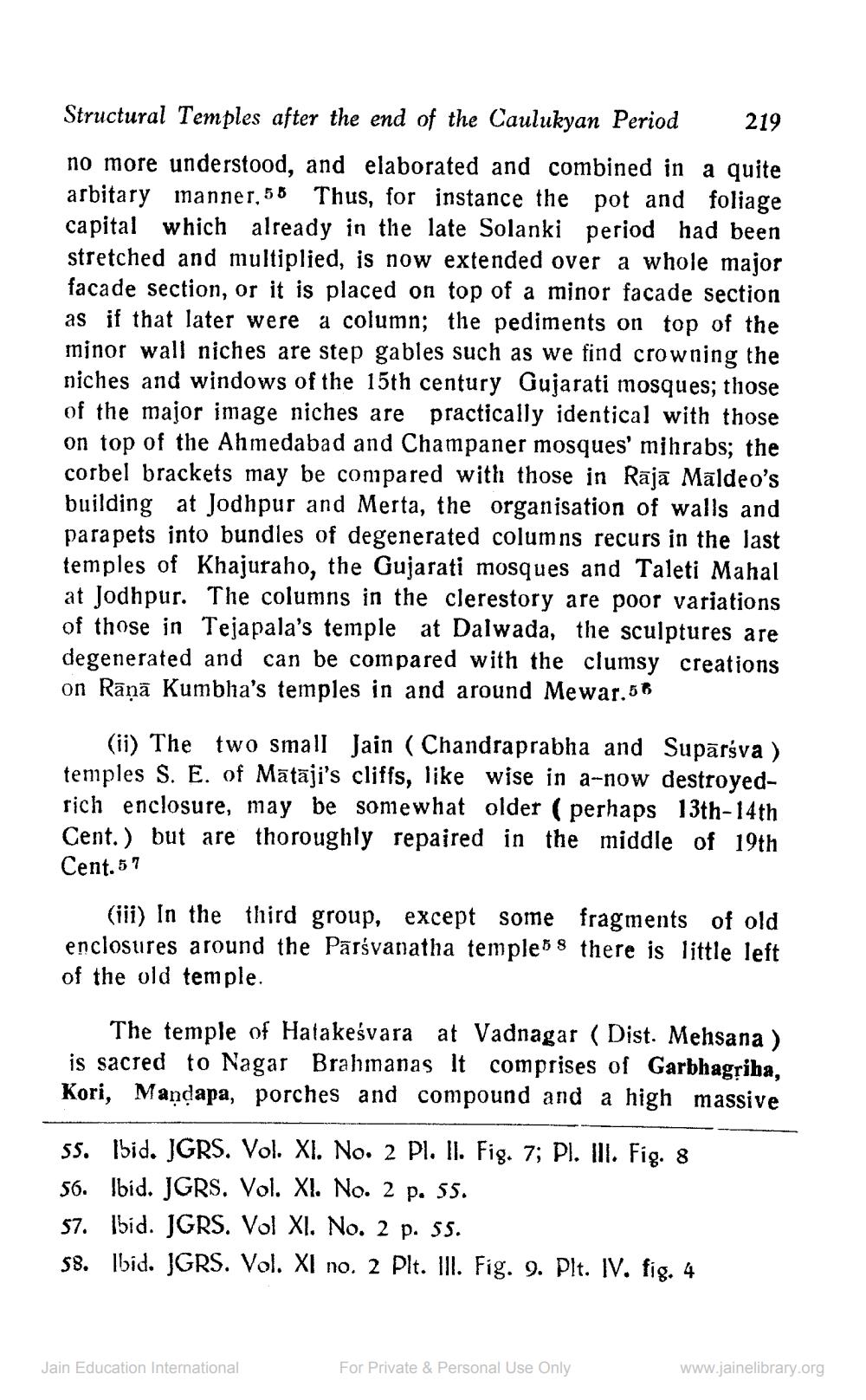________________
Structural Temples after the end of the Caulukyan Period 219 no more understood, and elaborated and combined in a quite arbitary manner, 58 Thus, for instance the pot and foliage capital which already in the late Solanki period had been stretched and multiplied, is now extended over a whole major facade section, or it is placed on top of a minor facade section as if that later were a column; the pediments on top of the minor wall niches are step gables such as we find crowning the niches and windows of the 15th century Gujarati mosques; those of the major image niches are practically identical with those on top of the Ahmedabad and Champaner mosques' mihrabs; the corbel brackets may be compared with those in Rājā Māldeo's building at Jodhpur and Merta, the organisation of walls and parapets into bundles of degenerated columns recurs in the last temples of Khajuraho, the Gujarati mosques and Taleti Mahal at Jodhpur. The columns in the clerestory are poor variations of those in Tejapala's temple at Dalwada, the sculptures are degenerated and can be compared with the clumsy creations on Rāṇā Kumbha's temples in and around Mewar.58
(ii) The two small Jain ( Chandraprabha and Supārsva) temples S. E. of Mātāji's cliffs, like wise in a-now destroyedrich enclosure, maybe somewhat older ( perhaps 13th-14th Cent.) but are thoroughly repaired in the middle of 19th Cent.57
(iii) In the third group, except some fragments of old enclosures around the Parsvanatha templess there is little left of the old temple.
The temple of Hatakeśvara at Vadnagar ( Dist. Mehsana) is sacred to Nagar Brahmanas It comprises of Garbhagriba, Kori, Mandapa, porches and compound and a high massive
55. lbid. JGRS. Vol. Xl. No. 2 Pl. II. Fig. 7; Pl. III. Fig. 8 56. Ibid. JGRS. Vol. Xl. No. 2 p. 55. 57. Ibid. JGRS. Vol Xl. No. 2 p. ss. 58. Ibid. JGRS. Vol. XI no. 2 Plt. III. Fig. 9. Plt. IV. fig. 4
Jain Education International
For Private & Personal Use Only
www.jainelibrary.org




